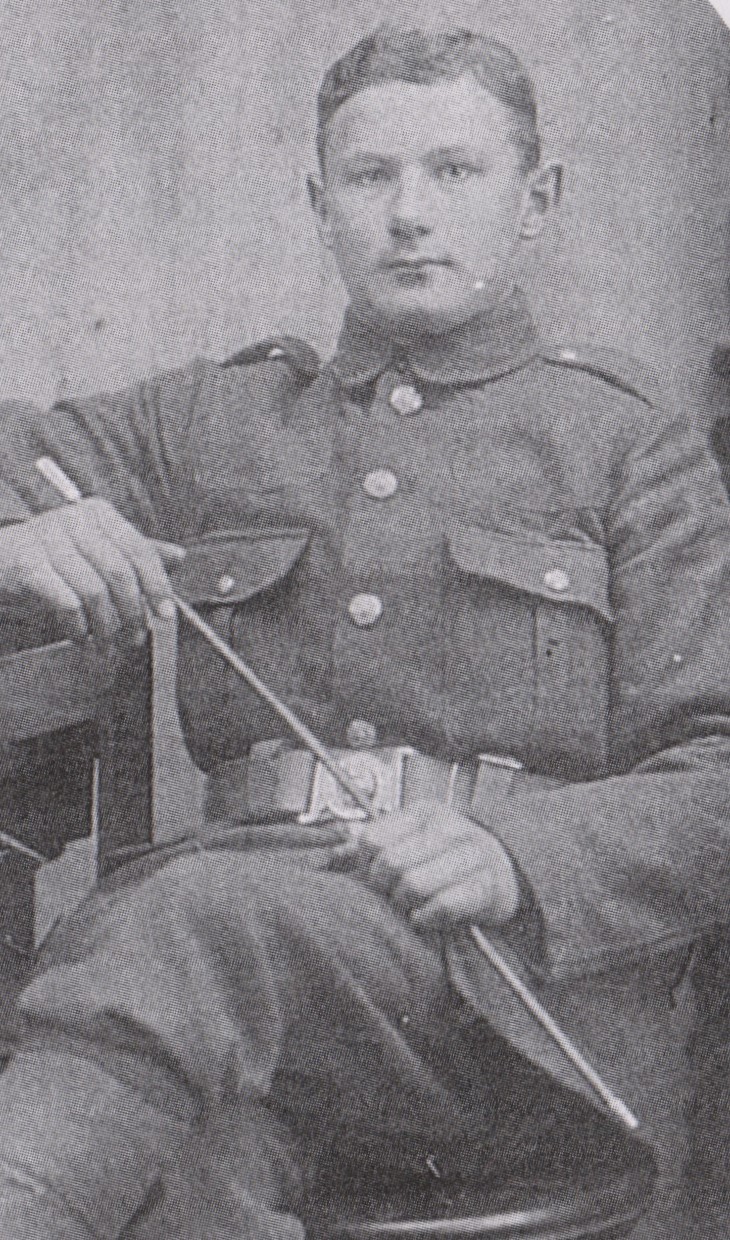
William was born in 1897 in the village of Thoralby, near Aysgarth, in the North Yorkshire Dales. Birth registrations show he was born in the first quarter of that year. He was the youngest son of farmer John and his wife Alice, living at Town Head Farm. The 1901 census shows he had two older brothers, Ralph 10 and John Hunter 7, and a sister Elizabeth 9. However, the 1911 census only shows William, and by that time his mother was a widow at 42. Also at the time, three boarders lodged at the farm. William attended the local school and in his teens became a valued member of Aysgarth Amateur Dramatic Society.
At the outbreak of war, aged 17, he enlisted in the 10th Battalion Yorkshire Regiment. He went to France in October 1915. By the onset of the 3rd Battle of Ypres in 1917 William was now a Corporal. It was during this offensive on the 3rd October that the 10th Battalion was involved in an action on Broodseinde ridge. It was during the heavy shelling on the 4th that William was killed. His body was never found. William is commemorated on a panel at the Tyne Cot Cemetery. He was just 19 years of age when he died.
Explore more memories from the ribbon
-
Wilfred Wood
Wilfred Wood, an employee of the North Eastern Railway before the outbreak of war, served with the 5th battalion of the Yorkshire Regiment. His commanding officer, 2nd Lt G H Smith wrote the following to his father: “Dear Mr Wood – It is with deep regret that I inform you of the death in action of your son, Pte. W. Wood. He was instantaneously killed on the morning of the 19th instant by a whizz-bang shell, which dropped into the trench he was in; he was buried behind the line on the 20th, and a good cross is being erected to his memory. Words cannot express how deeply I feel for you in your great loss. He was a good soldier, and always kept up bright spirits. The men of my platoon join me in the deepest sympathy for you” 240637 Private W Wood died on 19 July 1917 and is buried at Heninel Communal Cemetery Extension.
-
Dixon Overfield
Si Wheeler submitted the story of his great grandfather, Dixon Overfield, but it’s also a great example of the impact of war on all those connected to the soldier who served. “Dixon was married to Margaret and they had a daughter Madge, born in 1915. Dixon enlisted in Filey in September 1916. He originally joined the Royal Field Artillery but soon got transferred to the 6th Battalion, the Yorkshire Regiment. He was sent to France and saw action at Arras, before being moved to Belgium. Dixon survived this fight, but twelve days later he too was killed in action at the Battle of Poelcappelle on the 9th of October 1917 when a shell burst just above himself and several comrades. Their bodies were never recovered. Dixon is remembered on the Tyne Cot Memorial. Dixon’s wife died in 1924, leaving my grandmother, Madge, aged 9, an orphan. Raised by two aunts, then entering service at 13, Madge was taken under the wing of her housekeeper boss, Lizzie Andrew and became part of her extended family. Aged 18, Madge moved to London to train as a nurse, working through the Blitz and marrying a Dunkirk evacuee soldier, my granddad, Harry Wheeler. Harry didn’t mind where they settled to start married life, so they moved to Swanland in East Yorkshire, where Lizzie lived. My parents live there to this day.”
-
Joseph Allen
Joseph (third from left) was born around 1884 in Ainderby Steeple near Northallerton in North Yorkshire. He was the eldest of five children to Thomas and Amelia. He would eventually end up living at East Witton where he worked on the Jervaulx estate. He married Agnes Kendray and they would have three children. Joseph was a fine athlete as witnessed on Coronation Day June 22nd 1911. In the fell race to the top of Witton Fell and back Joseph came first. His exploits were published in the parish magazine. Joseph enlisted at Middleham joining the 7th Battalion Yorkshire Regiment. The Battalion embarked for France on the 13th July 1915. It was during operations in February 1917 in an area of the Somme that heavy German artillery would take a heavy toll. A shell destroyed a cellar being used to house stretcher cases killing most of the men. One of those reported missing was Private Joseph Allen. His body was never found. Joseph’s name is commemorating on the Thiepval Memorial. A service was held at East Witton Church on the 3rd March. Tragically, one month after the service, Joseph’s widow Agnes died, aged 33, leaving three young orphans.
